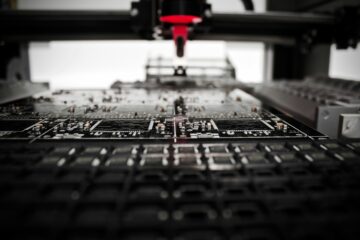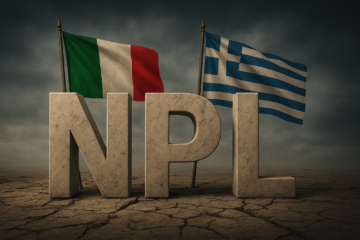Valeant Pharmaceuticals International, Inc.; market cap (as of 26/02/2015): US$76.68bn
Salix Pharmaceuticals, Ltd.; market cap (as of 26/02/2015): US$10.07bn
Introduction
The pharmaceutical industry has undergone an intense period of consolidation in the past 18 months which is far from over as the big players take advantage of the cheap credit to acquire the promising assets. On February 22, Valeant Pharmaceuticals International, Inc. (NYSE: VRX) and Salix Pharmaceuticals, Ltd. (NASDAQ: SLXP) entered into a definitive agreement under which Valeant will acquire all of the outstanding common stock of Salix for US$158 per share in cash. Valeant valued Salix at US$10bn plus US$4.5bn in debt amounting to a total enterprise value of approximately US$14.5bn. The deal represents Valeant’s biggest acquisition and brings the total amount Valeant has spent on acquisitions in the past five years to approximately US$30bn.
Companies’ overview
Salix Pharmaceuticals, headquartered in Raleigh, North Carolina, is a leader in the growing US gastrointestinal market with a portfolio of 22 total products, including its top-selling product Xifaxan, which treats diarrhea caused by irritable-bowel syndrome, as well as a strong near-term pipeline of innovative new assets.
Valeant Pharmaceuticals International, based in Quebec, Canada, focuses on drugs treating skin, eye and neurological disorders. Traditionally, Valeant’s revenues stemmed from its various products rather than a blockbuster drug but this is bound to change after the acquisition takes place. Valeant will become extremely reliant on the sales of Xifaxan, Salix’s main drug. Namely, it expects one fourth of its sales to come from Salix’s gastrointestinal products. In 2010 Valeant relocated to Canada from the U.S. trough a tax inversion it undergone with Canada-based Biovail Corp. This way it managed to cut its effective tax rate to less than 5%. Also Salix tried cutting its tax bill last year, announcing a deal that would have moved its headquarters to Italy and cut its tax bill to the low 20%. However, the deal did not go through following the regulatory changes targeting corporate inversions.
Valeant’s Acquisition Strategy
Aiming to grow through inorganic way and benefitting from low interest rate environment, Valeant has always been an active player in deal-making business, especially after the appointment of the new CEO, J. Michael Pearson. Since 2008, the company has spent US$19bn on 40 acquisitions and its market value grew from US$1.7bn in 2008 to approximately US$77bn in 2015.
The aggressive acquisition strategy of Valeant, which basically consists of increasing efficiency of targets, reducing extra spending and consolidating operations, has created tremendous gains for its shareholders. However, this strategy has raised concerns about the company’s debt burden as well as the attractiveness of its stock, which has been used as a form of payment in transactions. It has been accused of pursuing and unsustainable business model and destroying shareholders’ value by making big cuts to R&D spending. Indeed, after the unsuccessful acquisition attempt for Allergan, Valeant announced that it would focus on organic growth rather than acquisitions and pledged to spend up to US$2bn in order to buy back shares and pay down debt in an attempt to decrease the US$16.3bn outstanding debt, improve its Ba3 “junk status” rating and increase investor confidence in the company. However, the company’s dedication to organic growth and debt repayment has ended in a short time span as a result of the Salix deal, which brings about a massive increase in debt and boosts its ratio of net debt to EBITDA from below 4x to about 5.6x.
The Deal in Details
Valeant said it would finance the US$158/share cash offer with a US$22.2bn combination of bonds and bank loans. Banks led by Deutsche Bank and HSBC will provide about US$15bn of debt for the deal, and a further US$7.5bn to tide the group over while it secures a new agreement with existing creditors. As part of the financing package to fund Salix acquisition, it may have access to a US$5.5bn incremental loan facility and a US$9.6bn unsecured bridge loan. The bridge loan will be funded through the sale of corporate bonds in the high-yield market in the coming months. Moreover, a bond offer of that size would be the second-largest sale of junk debt, following a record offering by French cable operator Numericable in April 2014 that surpassed US$10bn.
According to the release, the merger is expected to yield more than US$500m in annual cost savings within six months. This astonishing savings target represents 90x of US$560m that Salix expected to spend on research, marketing and overhead costs in 2014 on an adjusted basis. As a matter of fact, Valeant has done something similar to that before. Namely, it acquired Bausch & Lomb in 2013 and Medicis in 2012 with the same goal (although its saving targets were not as aggressive). The value extraction also comes from Valeant’s 5% tax rate compared to the 30% Salix was paying. Indeed, when the deal gets completed the combined company is expected to have a tax rate of 5%.
After the announcement of the deal Valeant shares rose more than 13%. As previously mentioned value extraction will come from the cost savings and lower tax rate but another reason for this surge in the price is the expected increase in EPS: the transaction is expected to be modestly accretive to 2015 cash EPS, but over 20% accretive to 2016 cash EPS. On the other hand Salix’s shares closed at US$157.85 on Friday as news of the deal emerged. Its shares were trading around US$85 in recent months due to the recent accounting scandal.
Accounting Scandal
In 2014, Pharmaceutical industry has been a stage for a number of multi-billion dollar deals including tax inversions, last minute cancellations and regulatory issues such as Abbvie-Shire, Pfizer-AstraZeneca, Medtronic-Covidien and Actavis-Allergan. In fact, Valeant, which teamed up with Allergan’s largest shareholder, Pershing Square Capital and its manager Mr. Ackman, has relentlessly attempted to acquire Allergan and tried to escalate a proxy fight to gain more seats in Allergan’s board.
To fend off Valeant’s hostile takeover attempts, Allergan decided to acquire Salix in order to make itself too big to swallow. However, after the due-diligence process, Allergan decided to pull out of the deal because wholesaler inventory levels for some key products of Salix were much higher than normal levels. This strategy, also called channel stuffing, is used by companies to inflate current period sales by selling products to wholesalers more than they can sell to their customers in the current period, resulting in depressed sales levels for future periods.
Increasing concerns of the investors about reliability of accounting procedures and sales forecasts affected Salix intensely and the company revised its 2014 EPS forecasts from US$6.16 to US$5.20 and sales forecast from US$1.6bn to US$1.4bn. As a result, Salix shares plunged down almost 39% and Salix’s CFO, Adam Derbyshire, resigned.
Even though Valeant has received many accusations on its strategy, as explained above, CEO Mr. Pearson contents the critiques pledged to disprove them by reporting earnings for Valeant’s existing business separately from the recent acquisitions for the rest of 2015. This means that the financials of Salix will be kept separate since Valeant wants to show its organic growth in the underlying business and once and for all prove that it is not just an acquisition machine.
Financial Advisors
Deutsche Bank and HSBC acted as financial advisors to Valeant while Centerview Partners and J.P. Morgan acted as financial advisors to Salix.
[edmc id= 2413]Download as PDF[/edmc]



0 Comments